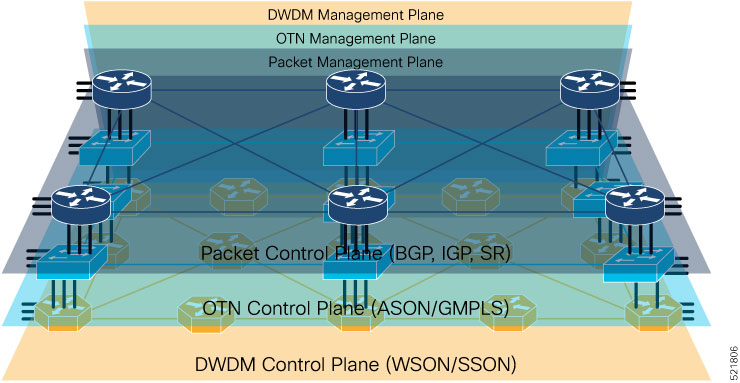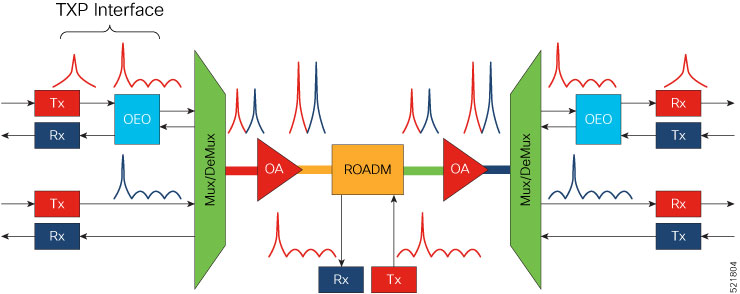Business Challenge
Today's networks, such as optical and packet networks, consist of multiple layers which are stitched together from many domains and vendors. Provisioning services in such complex environments requires intricate coordination between different management systems and organizations. It is challenging to operate these networks and the total cost of ownership (TCO) is rising. Service providers must simplify and reimagine the architecture to curtail the rising operational costs and fast-track the delivery of new services.
Solution
The Routed Optical Networking solution aims to simplify networks by removing the complexities inherent to the infrastructure. This simplification allows service providers to leverage their assets more effectively by:
-
unifying the IP and optical layers of the network using a single control plane
-
using high-speed coherent pluggable modules that offer reach and performance at appropriate cost points and power profiles
-
simplifying the network life-cycle management by leveraging automation in all phases of the lifecycle
Changing the paradigm, the Cisco Routed Optical Networking solution improves operational efficiency and reduces network TCO. The transformed network also increases service agility.


 Feedback
Feedback